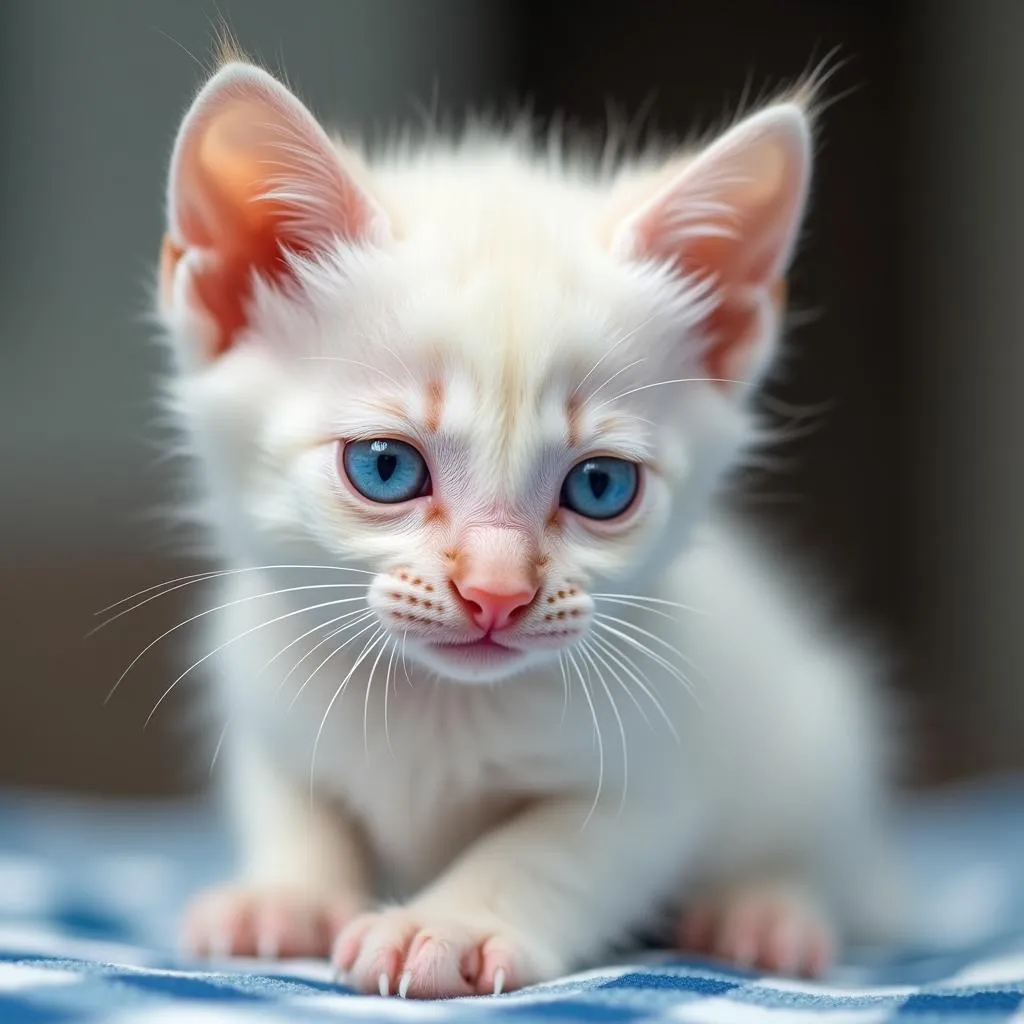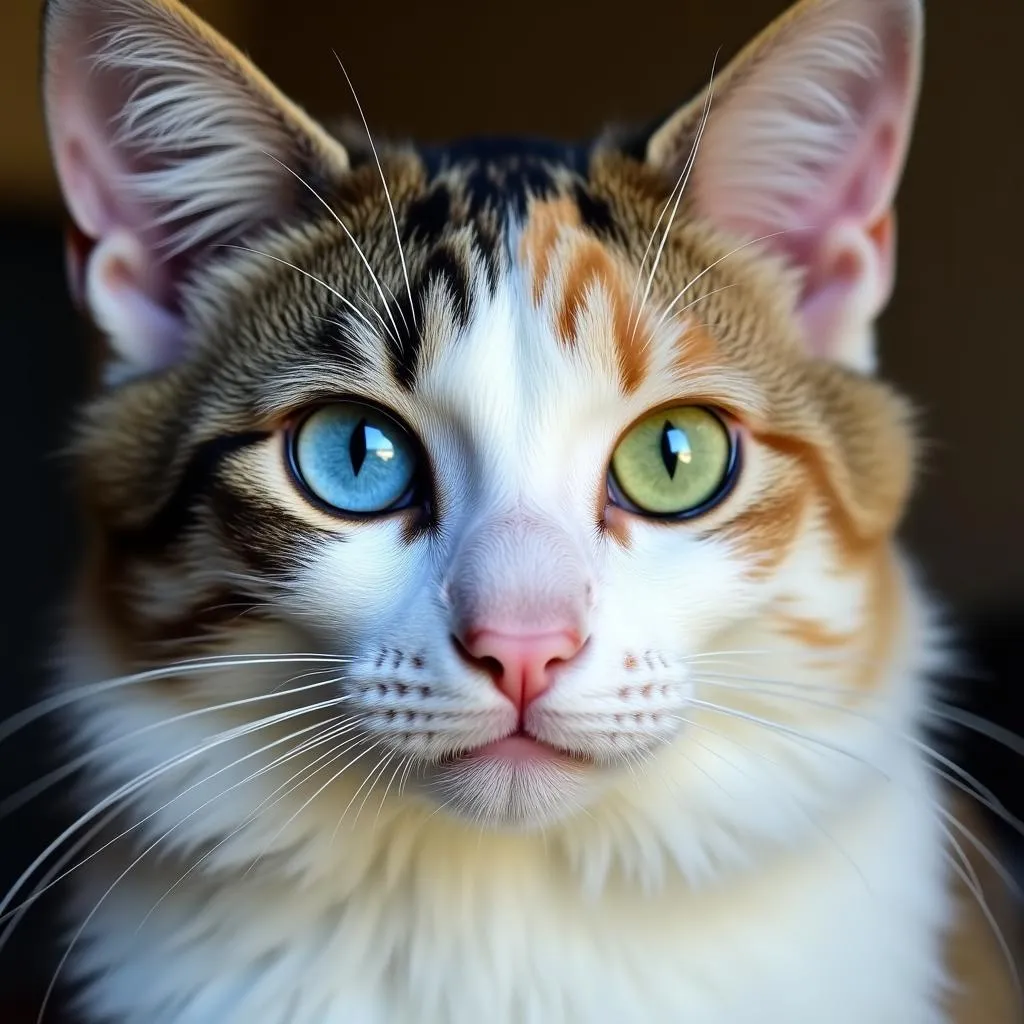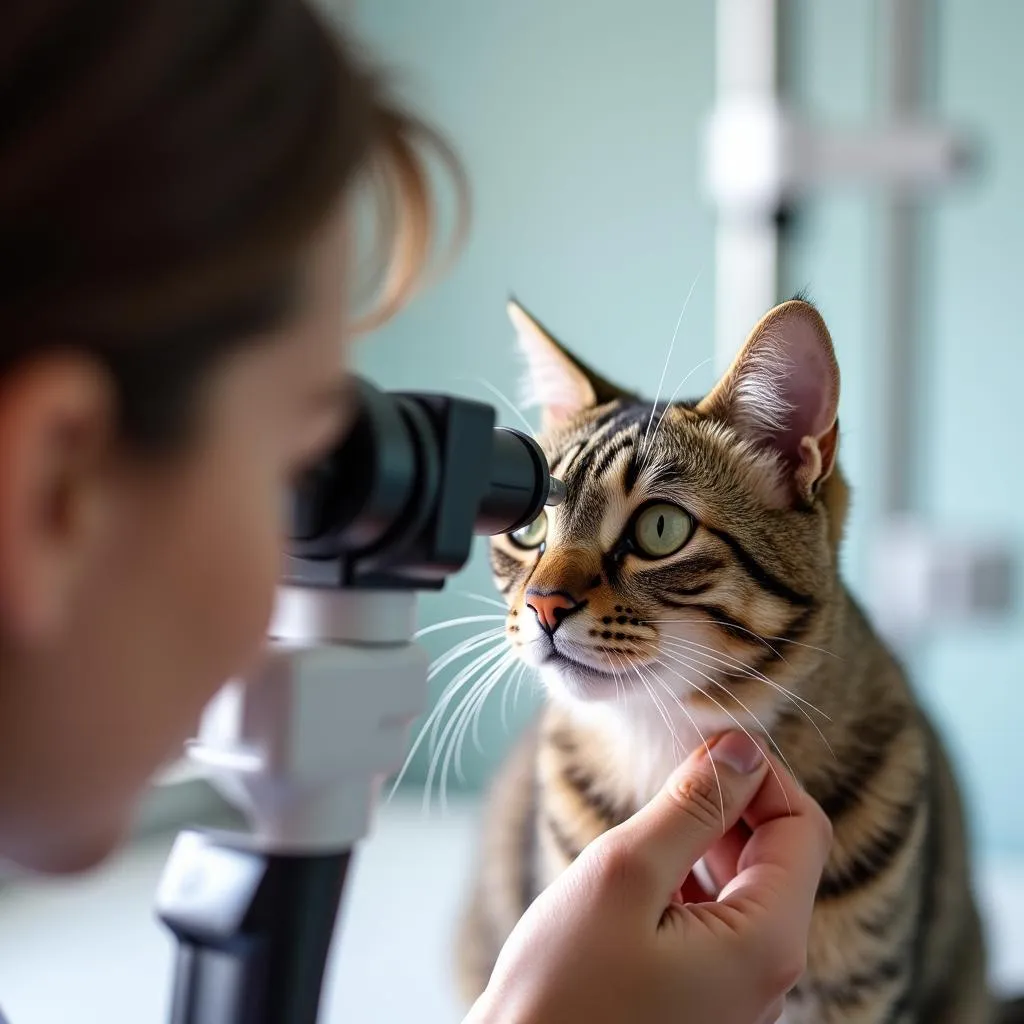Cats are fascinating creatures with mesmerizing eyes that come in a stunning array of colors. From the piercing green of a Russian Blue to the deep gold of a Bengal, feline eye color adds to their mystique. But did you know that a cat’s eye color can actually change throughout its life?
While not all cats experience dramatic eye color shifts, subtle changes are quite common, especially during the first year of life. This fascinating phenomenon is due to the production of melanin, the pigment responsible for eye color in both humans and animals.
The Science Behind Feline Eye Color
Kittens are born with blue eyes because melanin production is still developing. As they grow, specialized cells called melanocytes produce more melanin, gradually changing the eye color. The amount and type of melanin produced determine the final eye color.
 A close-up of a kitten with bright blue eyes, gazing curiously at the camera. The image showcases the characteristic blue eye color of newborn kittens.
A close-up of a kitten with bright blue eyes, gazing curiously at the camera. The image showcases the characteristic blue eye color of newborn kittens.
When Do The Color of Kittens Eyes Change?
The color transformation typically begins around the age of three to four weeks. You might notice a subtle change in the shade of blue, or it might appear as a ring of a different color around the pupil. By the time a kitten reaches six to eight weeks old, their eye color will have usually transitioned to its adult shade.
What Colors Can Cats Eyes Be?
Cats can have a variety of eye colors, including:
- Blue: This color is caused by a lack of melanin in the iris.
- Green: Green eyes are a result of moderate melanin production.
- Gold: High levels of melanin produce the striking gold or amber eyes seen in some breeds.
- Copper: This rich, reddish-brown color is also associated with high melanin levels.
- Hazel: Hazel eyes are a combination of green and brown, creating a unique and captivating look.
- Odd-Eyed: Some cats have one eye of one color and the other eye of a different color. This is known as heterochromia and is a beautiful genetic anomaly.
 A portrait of a cat with heterochromia, displaying one bright blue eye and one striking green eye. The image highlights the captivating beauty of this genetic anomaly.
A portrait of a cat with heterochromia, displaying one bright blue eye and one striking green eye. The image highlights the captivating beauty of this genetic anomaly.
Factors Influencing Eye Color Change
While genetics play the primary role in determining a cat’s eye color, other factors can also influence subtle changes:
- Breed: Certain breeds are predisposed to specific eye colors. For instance, Siamese cats are known for their striking blue eyes, while Persians often have copper or gold eyes.
- Age: As cats age, their eye color may slightly darken or become less vibrant.
- Health: Certain medical conditions, such as uveitis, can cause changes in eye color. If you notice any sudden or drastic changes in your cat’s eye color, it’s crucial to consult a veterinarian.
Can Cat Eye Color Indicate Health Issues?
In most cases, changes in a cat’s eye color are simply a natural part of their development. However, sudden or dramatic changes can sometimes be a sign of an underlying health problem. For instance, redness, cloudiness, or discharge from the eyes, accompanied by a change in eye color, can be symptoms of an infection or injury.
“Regular veterinary checkups are essential for maintaining your cat’s overall health, including their eye health,” says Dr. Emily Carter, a veterinarian specializing in feline medicine. “Early detection of any eye problems can often lead to more successful treatment outcomes.”
 A veterinarian gently examines the eyes of a cat using an ophthalmoscope, checking for any signs of health issues.
A veterinarian gently examines the eyes of a cat using an ophthalmoscope, checking for any signs of health issues.
Conclusion
The color of a cat’s eyes is a fascinating aspect of their appearance and can change over time, especially during kittenhood. While most eye color shifts are natural and harmless, it’s crucial to be aware of any sudden or drastic changes that could indicate an underlying health problem. By understanding the science behind feline eye color and paying close attention to your cat’s overall health, you can help ensure those beautiful eyes stay bright and healthy for years to come.
FAQs
Q: Do all kittens have blue eyes?
A: Yes, most kittens are born with blue eyes.
Q: What is the rarest cat eye color?
A: Odd-eyed cats are relatively rare, and within this category, certain color combinations, like one blue eye and one green eye, are even less common.
Q: Can a cat’s eye color change after a year?
A: While the most significant eye color changes occur during kittenhood, subtle shifts can still occur in some cats even after a year.
Q: Can a cat’s eye color change due to stress?
A: While stress doesn’t directly change a cat’s eye color, it can cause their pupils to dilate, making the eyes appear darker.
Q: What should I do if my cat’s eye color changes suddenly?
A: Consult your veterinarian immediately if you notice any sudden or drastic changes in your cat’s eye color, especially if accompanied by other symptoms like redness, discharge, or cloudiness.
Other topics you might find interesting:
Need help with choosing the perfect color for your home? Contact us at:
Phone: 0373298888
Email: [email protected]
Address: 86 Cầu Giấy, Hà Nội
We have a dedicated customer service team available 24/7.

